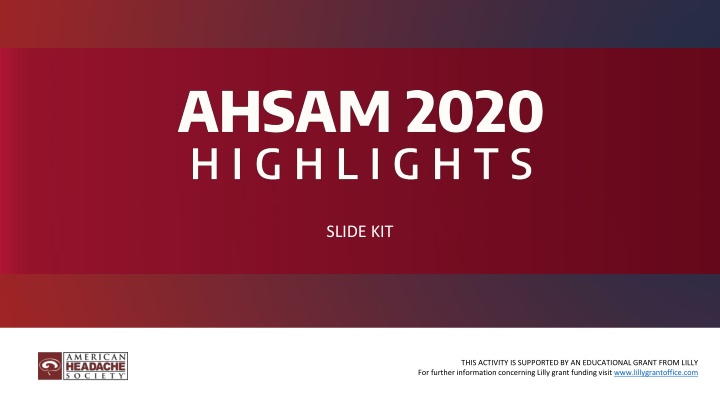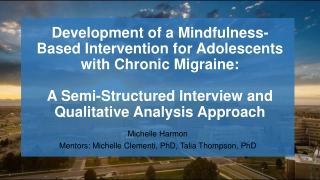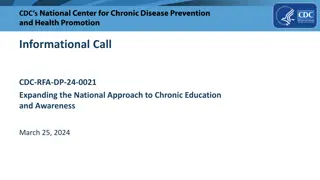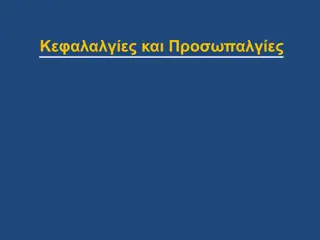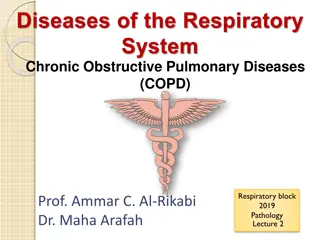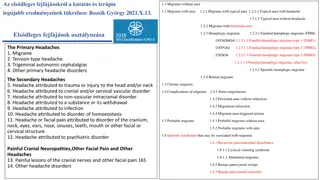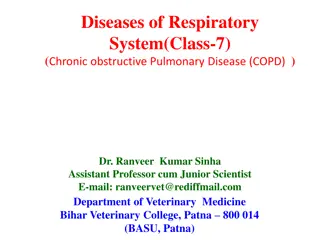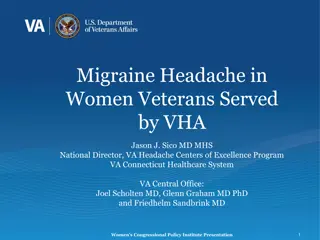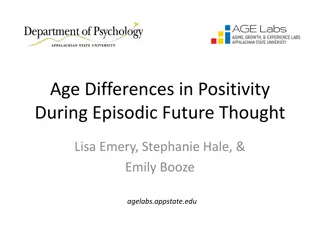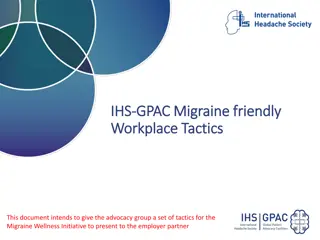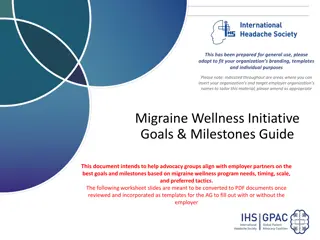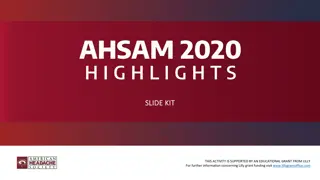Unveiling Insights: Episodic vs. Chronic Migraine
Migraine is a complex neurologic condition with varying frequency and impact. This study delves into the differences between episodic and chronic migraine, highlighting the burden, healthcare utilization, and treatment needs. Findings suggest potential similarities in addressing these two migraine subtypes, calling for a reevaluation of diagnostic criteria. The CaMEO Study sheds light on the nuances of migraine management and underscores the importance of tailored approaches for individuals with differing headache frequencies.
Download Presentation

Please find below an Image/Link to download the presentation.
The content on the website is provided AS IS for your information and personal use only. It may not be sold, licensed, or shared on other websites without obtaining consent from the author.If you encounter any issues during the download, it is possible that the publisher has removed the file from their server.
You are allowed to download the files provided on this website for personal or commercial use, subject to the condition that they are used lawfully. All files are the property of their respective owners.
The content on the website is provided AS IS for your information and personal use only. It may not be sold, licensed, or shared on other websites without obtaining consent from the author.
E N D
Presentation Transcript
SLIDE KIT THIS ACTIVITY IS SUPPORTED BY AN EDUCATIONAL GRANT FROM LILLY For further information concerning Lilly grant funding visit www.lillygrantoffice.com
SLIDE KIT Exploring the Boundaries Between Episodic and Chronic Exploring the Boundaries Between Episodic and Chronic Migraine: Results from the Migraine: Results from the CaMEO CaMEO Study Study Presented by Richard B. Lipton, MD Professor and Vice Chair of Neurology, Albert Einstein College of Medicine Bronx, New York Developed by Infomedica Medical Education& Information AHS Virtual Annual Scientific Meeting content is made available to an international audience through a licensing agreement between Infomedica and the American Headache Society. Infomedica is an independent medical education provider that delivers medical information to healthcare professionals through conference coverage and online educational programs and activities.
A M E R I C A N H E A D A C H E S O C I E T Y V I R T U A L A N N U A L S C I E N T I F I C M E E T I N G O F F I C I A L H I G H L I G H T S Key messages Migraine is a chronic neurologic disease characterized by headache pain with nausea and sensory sensitivity in various combinations. There was a strong linear relationship between monthly headache day frequency and measures of migraine burden and healthcare resource utilization, showing increases in all measures among high-frequency episodic migraine (HFEM) respondents compared to low-frequency chronic migraine (LFCM). Results showed substantial overlap in levels of burden, anxiety, depression and healthcare utilization among HFEM and LFCM. Treatment needs of HFEM and LFCM may be similar. The 15-monthly headache day threshold used for the diagnosis of chronic migraine may merit reconsideration. DEVELOPED BY
A M E R I C A N H E A D A C H E S O C I E T Y V I R T U A L A N N U A L S C I E N T I F I C M E E T I N G O F F I C I A L H I G H L I G H T S Background What do we already know about this topic? The International Classification of Headache Disorders, 3rdedition (ICHD-3), defines chronic migraine as 15 or more monthly headache days for 3 months with criteria for migraine, with or without aura, met on 8 days per month.1 Episodic migraine is migraine with fewer than 15 monthly headache days. Differences in the burden of migraine among people with various headache frequencies have not been well characterized. DEVELOPED BY
A M E R I C A N H E A D A C H E S O C I E T Y V I R T U A L A N N U A L S C I E N T I F I C M E E T I N G O F F I C I A L H I G H L I G H T S Background How was this study conducted? The CaMEO Study was a longitudinal, web-based study of adults (aged 26 57 years) meeting modified ICHD-3 migraine criteria (N=16,789).2 Data was subgrouped based upon self-reported monthly headache days: Low- and moderate-frequency episodic migraine (LFEM), HFEM, LFCM, and high- frequency chronic migraine (HFCM). The relationships of monthly headache day category with various outcome measures, such as headache-related disability, characteristics and medication, were assessed by chi-test for trend. DEVELOPED BY
A M E R I C A N H E A D A C H E S O C I E T Y V I R T U A L A N N U A L S C I E N T I F I C M E E T I N G O F F I C I A L H I G H L I G H T S Findings What does this study add? The more frequent headache categories were associated with a slightly older age of onset, higher proportion of BMI in the obese range, overall lower level of household income and education. There was overlap between HFEM and LFCM respondents in levels of cutaneous allodynia, disability, interictal burden, anxiety and depression. Utilization of healthcare resources significantly increased across monthly headache day categories (p<0.001) but were markedly similar between HFEM and LFCM. Utilization of acute and preventative treatments increased with monthly headache day category, but patterns of treatment utilization were generally similar between HFEM and LFCM. Compared to HFEM, the rate of medication overuse was more than 20 percentage points higher among LFCM. DEVELOPED BY
A M E R I C A N H E A D A C H E S O C I E T Y V I R T U A L A N N U A L S C I E N T I F I C M E E T I N G O F F I C I A L H I G H L I G H T S Perspectives How does this study impact clinical practice? Treatment needs of HFEM and LFCM may be similar. The 15-monthly headache day threshold used for the diagnosis of chronic migraine may merit reconsideration. LFCM patients may overuse medication. DEVELOPED BY
A M E R I C A N H E A D A C H E S O C I E T Y V I R T U A L A N N U A L S C I E N T I F I C M E E T I N G O F F I C I A L H I G H L I G H T S References 1. Headache Classification Committee of the International Headache Society (IHS) The International Classification of Headache Disorders. Cephalalgia 2018;38:1- 211. 2. Adams AM, Serrano D, Buse DC, et al. The impact of chronic migraine: The Chronic Migraine Epidemiology and Outcomes (CaMEO) Study methods and baseline results. Cephalalgia 2015;35:563-578. DEVELOPED BY
